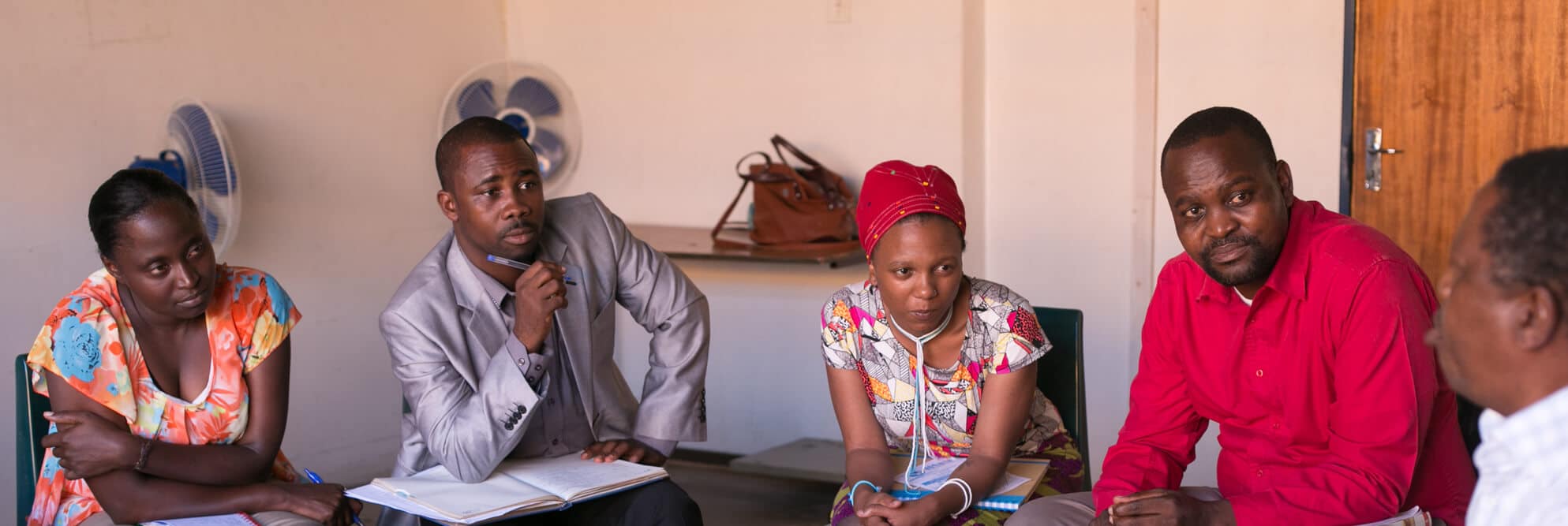Co-Design Process
The Justice For All campaign was developed through a 11 month-long co-design process with members of the Grassroots Justice Network, civil society, and justice actors. Donors and government allies were also consulted. Focus groups, 1:1 interviews, and surveys were utilized during the brainstorming and ideation phase. They took place in person and online in multiple regions. A smaller group of members crafted the strategy, with final sign-off coming from the Network Advisory Council. Download the strategy here.
 The strategy called for a network-directed campaign structure. Our hope was that network members would set goals and drive the campaign forward at the national, regional, and global levels, while the Network team – housed at Namati – would provide the infrastructure, resources, shared messaging, and strategies needed to foster action.
The strategy called for a network-directed campaign structure. Our hope was that network members would set goals and drive the campaign forward at the national, regional, and global levels, while the Network team – housed at Namati – would provide the infrastructure, resources, shared messaging, and strategies needed to foster action.
Throughout the campaign, members continued to direct our strategy and goals through coalition calls, our annual goal setting process, and annual network surveys.

In 2020, when the COVID-19 pandemic hit, we understood our strategy would have to pivot quickly. We asked members to participate in a rapid COVID-19 Justice Challenge. The results of this challenge were utilized to revamp our strategy to focus on immediate and medium term needs of grassroots justice defenders, who were overwhelmingly still serving their communities in spite of national lockdowns. The information collected through this challenge provided the rationale and data to bring into being the COVID-19 Grassroots Justice Fund.

Through the co-design process, we identified two overarching advocacy goals: to increase financing and protections for grassroots justice defenders. We believed these twin aims would appeal to and motivate a large number of justice defenders, and create a consistent, unifying, and clear message for our movement.
We created a comprehensive list of asks, which were outlined in the Justice For All policy brief and revised in the COVID briefing. These asks were directed to and shared widely with our primary target audience: governments and donors.
Our intention was for Network members to use the framework (located to the left) to fuel action and policy change in their national and regional contexts, adapting the two collective goals as needed to their specific experiences under the umbrella of Justice For All.
Lessons Learned
- Creating opportunities for members to co-design the campaign and regularly feed into planning ensured that campaign goals and activities were aligned with members’ needs and desires. By updating our goals during the COVID-19 pandemic, we kept the campaign relevant at a time when many projects were being put on hold.
- A network-directed campaign works best when there is robust infrastructure that allows for peer-to-peer support to drive member action. Network leadership matured during the campaign. In particular, regional core groups that were formed in the second and third year of the campaign became a great model for cascading the campaign strategy into regions. Ideally, these would have been in place at launch.
- Network members who drove forward the campaign at the global, regional, and national level were members with existing experience in advocacy. Members with limited advocacy capacity struggled to organically pick up the campaign for their advocacy efforts. More capacity building and support, such as through practical guidance, toolkits, and mentoring, may have been a better approach than a network-directed model. Alternatively, more people-power on the campaign team would have allowed for more tailored support. At its peak, the campaign had two and a half full-time staff positions, with project-specific support from regional staff in Namati’s network, communications, development, and leadership teams, as well as paid fellows.
- Having broad goals allowed for many members to attach themselves to the campaign, but maintaining momentum and progress on both financing and protection proved to be challenging. It may have been more effective to advocate around a single clear ask.
- Network members had more experience and knowledge in the area of financing, and the campaign team dedicated more people-power to working on the financing goal. As the campaign evolved and we were successful in establishing financing mechanisms – the Legal Empowerment Fund and COVID-19 Grassroots Justice Fund – it was possible to build momentum around filling these funds.


